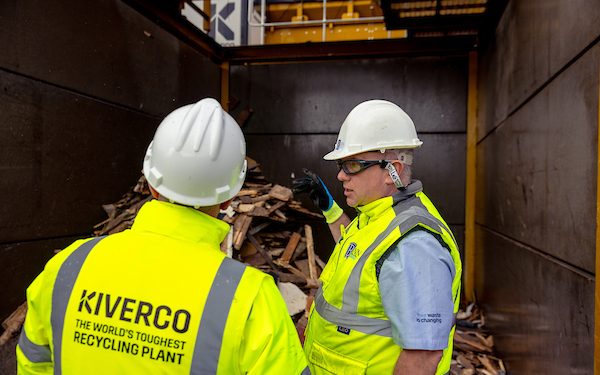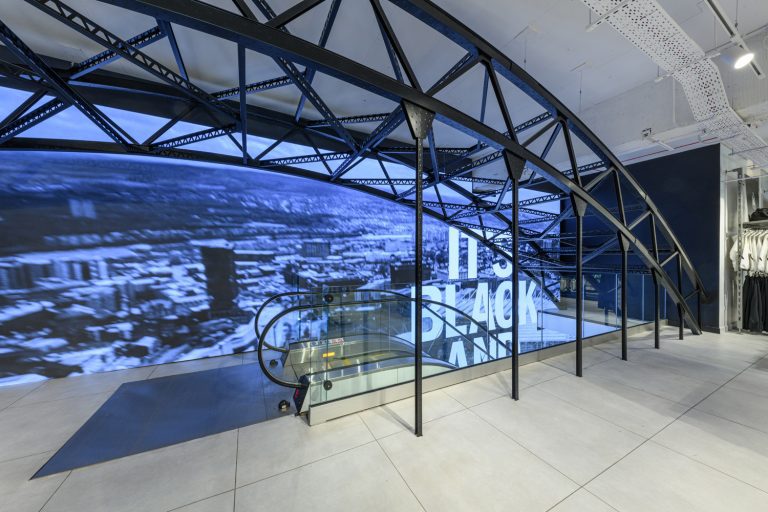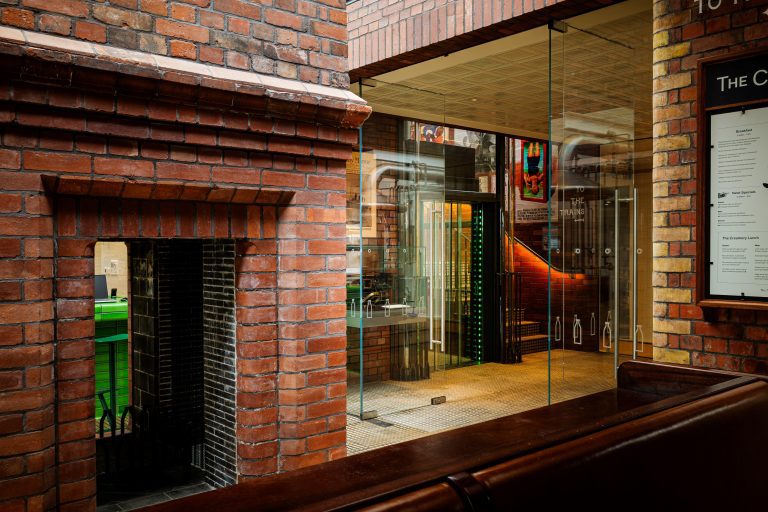The reimagined Creamery building at the heart of Castle Cary railway station now boasts a striking, all-glass passenger lift from Stannah. This modern addition combines style with accessibility, offering a transparent and elegant way to visit the trackside restaurant and working creamery. This historic structure, which has been a part of the area since 1912, recently underwent an extensive renovation to enhance the safety, stability and user experience. The Creamery is renowned for its tower, ‘La Belle Epoque’, which still stands tall today as a symbol of industrial innovation and artistic flair. Originally established by brothers G&C Prideaux as a milk factory, the creamery processed milk delivered by local farmers into cheese, then transported to London via the railway. Today, The Creamery is open to the public and has been transformed into a community hub, featuring a restaurant and shop, and offering a range of delightful food options to travellers, visitors, and train passengers while reviving its cheesemaking heritage. The client The Creamery is owned by Koos Bekker and his wife, who also owns The Newt in Somerset, which was recently awarded the World’s Best Boutique Hotel at The World’s 50 Best Hotels 2023. Ken Biggs Contractors were appointed as the principal contractor on this project and made contact after being impressed by Stannah’s distinctive refurbishment of a vintage passenger lift at the YMCA in Bristol. Working with architects Stonewood Design, and Ken Biggs Contractors, Stannah Lifts worked to deliver a lift that was both modern and harmoniously integrated with the early 20th-century aesthetic of the building. The project’s vision was to blend the 1912 style with contemporary elements, which also resulted in Ken Biggs Contractors reconstructing the entire Creamery. The work Stannah Lifts collaborated with architects to incorporate the new lift into the design of the re-imagined Creamery. The project commenced with the installation of vertical rail guides to keep the lift aligned within the elevator shaft, followed by the mechanical first fix in 2023 and the completion of the mechanical package. Shortly after, works commenced on the glass lift shaft and car. The lift shaft and car featured bespoke glass sourced from Gemtec, a specialist German company. Stannah Lifts facilitated a 24-hour visit to Germany for Ken Biggs Contractors and Stonewood Design, allowing them to review the glass and how it would integrate with the lift design before shipping it to the UK, which minimised the need for additional modifications. To ensure the glass was installed without any issues, Gemtec provided helpful support throughout this stage. Meanwhile, Stannah Lifts supplied and fitted custom trims and a glass panel to fill the gap adjacent to the glass car doors. A CTV mechanical lift car package was fitted as part of the overall lift components and snagging works meant full lift completion in April 2024. Additional building works in the Creamery included a new brick extension to match the original factory’s detailing, reflecting the 1912 era and the Titanic’s historical significance, with posters embedded in the staircase brickwork. The design also pays tribute to the rich history of milk and cheese production at the Creamery, with milk bottle carvings integrated throughout the building and on the lift car doors. The challenge One particular challenge was aligning with the client’s design vision while maintaining the lift’s structural integrity for safe and efficient operation. As a result, the design and concept of the lift evolved during the project to better address customer needs and project requirements. Precision was crucial as several design elements, including lighting and fitting locations, were adapted throughout the project. Stannah Lifts collaborated closely with the client to balance their needs with practical and mechanical feasibility, such as incorporating shaft lights underneath the lift structure for a minimalistic look, creating an illuminated effect. At the customer’s request, the lift’s structure wasn’t initially anchored to the brickwork, resulting in a requirement to monitor structural movement. Stannah conducted wind load calculations, revealing potential issues during gale-force winds. To ensure the safety of passengers, Stannah proposed securing the lift to the brickwork. Given the complexity of the installation, Stannah assembled a highly skilled team to execute the project, which included Gemtec, R&R Lifts, and Vinsol. Stannah participated in regular meetings and design consultations with the client to ensure their requirements were thoroughly addressed. The result The custom-designed passenger lift features a minimalist approach with discrete fixings and fixtures. It seamlessly integrates handrails through the glass without additional supports or corner trims. This 8-person all-glass lift allows natural light to illuminate the interior, offering passengers views of the Creamery as they travel to the first floor. The hydraulic passenger lift serves two floors and travels 3.6 metres to provide step-free access from The Creamery restaurant to the train station’s platform. A unique aspect of the lift is the placement of the keyhole for manually operating the car and landing doors. Traditionally mounted at the top of the landing doors, Stannah positioned the keyhole at the bottom to align with the minimalist design, effectively concealing the system. To address signal issues within the shaft, a GSM package was installed with an antenna mounted on the structure ensuring reliable signal reception. The bespoke lift adheres to all open protocol requirements, allowing for independent maintenance and repair, and is fully DDA compliant, ensuring accessible features like illuminated push buttons are positioned at a height accessible to wheelchair users. All Stannah lifts are certified according to the Lifts Regulations 2016 (2016 No. 1093). Ben Harding, Bristol Branch Manager at Stannah Lift Services, said: “We’re proud to have worked on this unique project. It hasn’t come without its challenges but we can proudly say this bespoke glass lift embodies our client’s minimalist vision while offering a safe and accessible alternative to reaching the train platform. It seamlessly blends modern design with functionality while offering an unobstructed view of the Creamery as passengers ascend.”www.stannahlifts.co.uk Building, Design & Construction Magazine | The Choice of Industry Professionals














